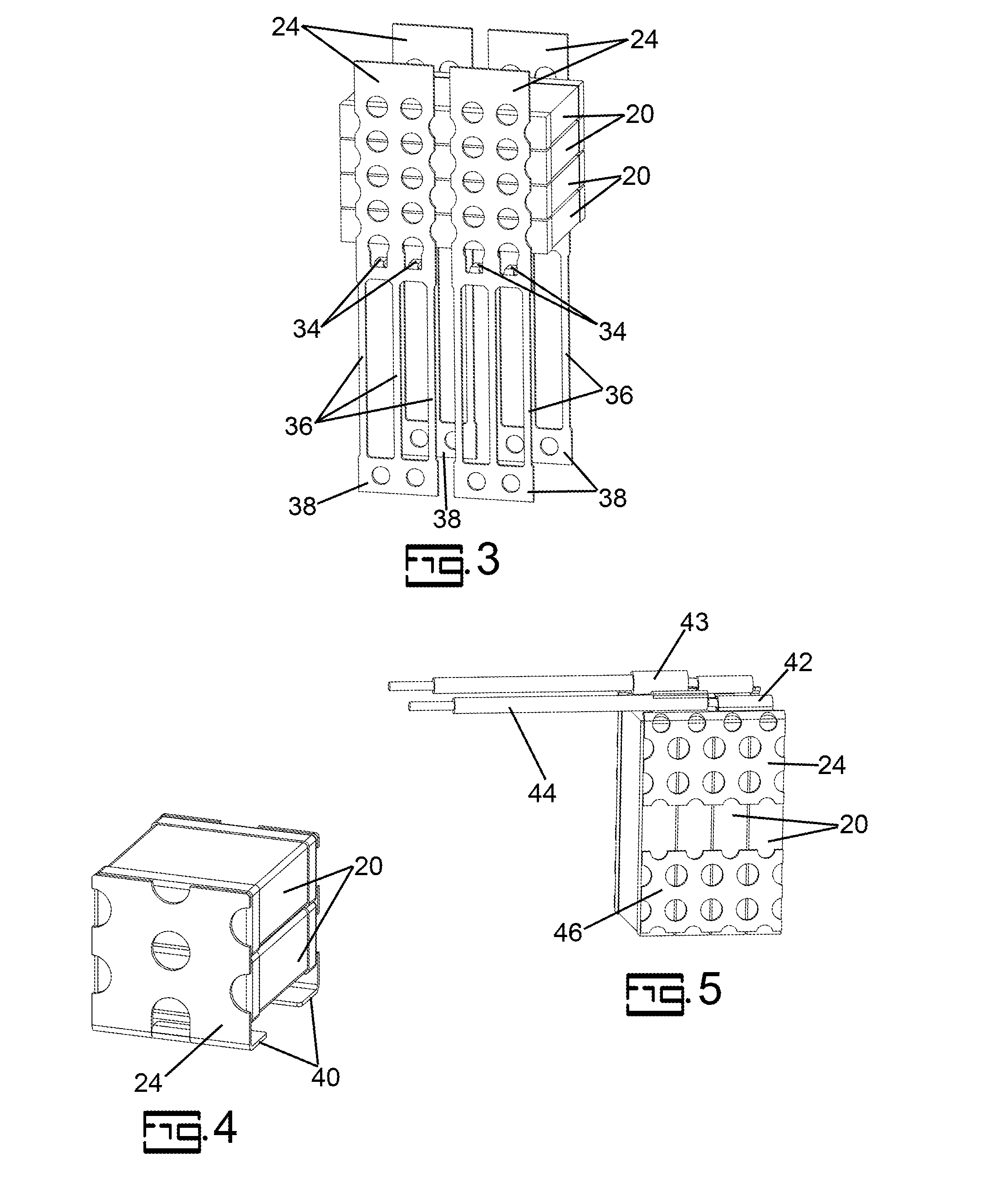Ceramic Capacitors with Improved Lead Designs
a ceramic capacitor and lead design technology, applied in the direction of fixed capacitors, stacked capacitors, fixed capacitor details, etc., can solve the problems of increasing the potential for cracks, electrical failure, cracks in ceramic capacitors, etc., to reduce the stresses on ceramic elements, increase mechanical robustness, and increase mechanical robustness
- Summary
- Abstract
- Description
- Claims
- Application Information
AI Technical Summary
Benefits of technology
Problems solved by technology
Method used
Image
Examples
example 1
[0074]A comparative example was prepared with a flat lead with a width of 1.8 mm (0.071 inches) without perforation or protrusion connected along the length of each MLCC of a stack of four MLCC's using 10 mg of solder paste for each lead MLCC interface.
example 2
[0075]A lead with edge indentations was manufactured and connected along the length of each MLCC using 10 mg of solder paste for each lead MLCC interface. The lead width was 1.8 mm (0.071 inches) with 5 edge indentations per edge that were half circles with a radius of 0.71 mm (0.028 inches) separated by about 2.2 mm (0.085 inches) with the group of 5 perforations approximately centered on the MLCC terminal. The edge indentations, 32, are illustrated schematically in FIG. 2.
example 3
[0076]A crimped lead with protrusions was manufactured and connected along the length of each MLCC using 26 mg of solder paste for each lead MLCC interface. The lead width was 1.80 mm (0.071 inches) with 4 crimps per lead each having a width of about 0.38 mm (0.015 inches) where the lead contacted the capacitor terminal and arranged in two pairs of crimps oriented perpendicular to the length of the lead. The crimps within each pair were separated from each other by 1.8 mm (0.071 inches) and the center of each pair of crimps were separated from each other by about 10.2 mm (0.40 inches). The crimps extended from edge to edge of the lead. The height of each crimp was about 0.15 mm (0.006 inches). The pairs of crimps were located in the approximate center of the MLCC electrode terminals. The device is illustrated in FIG. 16.
PUM
| Property | Measurement | Unit |
|---|---|---|
| Length | aaaaa | aaaaa |
| Length | aaaaa | aaaaa |
| Length | aaaaa | aaaaa |
Abstract
Description
Claims
Application Information
 Login to View More
Login to View More - R&D
- Intellectual Property
- Life Sciences
- Materials
- Tech Scout
- Unparalleled Data Quality
- Higher Quality Content
- 60% Fewer Hallucinations
Browse by: Latest US Patents, China's latest patents, Technical Efficacy Thesaurus, Application Domain, Technology Topic, Popular Technical Reports.
© 2025 PatSnap. All rights reserved.Legal|Privacy policy|Modern Slavery Act Transparency Statement|Sitemap|About US| Contact US: help@patsnap.com



